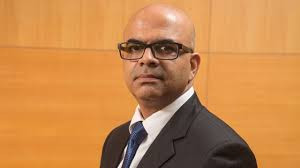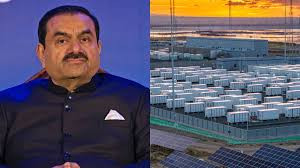Expert View: Gaurav Misra Backs Large-Cap Stocks and Domestic-Focused Sectors Amid Global Tariff Uncertainty

IIE DIGITAL DESK ; increasingly volatile global market landscape shaped by trade wars, shifting geopolitical alliances, and protectionist policies, large-cap stocks and domestic-centric sectors are emerging as stable investment opportunities. According to Gaurav Misra, renowned investment expert and Co-Head of Equities at Mirae Asset Investment Managers, the ongoing global tariff uncertainties—particularly those stemming from rising tensions between the United States and China—are making Indian large-cap stocks more attractive for long-term investors. At a time when global trade is under pressure, Misra believes domestic demand-led sectors offer a reliable growth path, relatively insulated from international disruptions.
Misra’s outlook comes amid renewed trade war fears sparked by former U.S. President Donald Trump’s proposed 125% tariffs on Chinese imports. Such aggressive protectionist measures, while aimed at domestic manufacturing revival in the U.S., are likely to cause ripple effects across global markets, including export-heavy Asian economies. India, however, is in a relatively better position, says Misra, due to its lower dependency on global trade and a consumer-driven economy. In his view, this sets the stage for strong performance from companies that cater to domestic consumption, infrastructure, and financial services.
Large-cap companies, particularly those with strong balance sheets, sound corporate governance, and robust earnings visibility, are increasingly seen as safe havens in turbulent times. Misra explains that these companies are better positioned to withstand macroeconomic shocks, currency fluctuations, and interest rate cycles. Furthermore, large-caps tend to attract more institutional investment, both domestic and foreign, during uncertain phases, thereby maintaining liquidity and resilience. Indian blue-chip firms in sectors such as banking, fast-moving consumer goods (FMCG), and information technology continue to offer value and stability even as smaller, high-growth companies face margin pressure due to rising input costs and global demand shifts.
Another major area of confidence for Misra is India's domestic growth story. Despite concerns over inflation and fiscal tightening, India’s structural drivers—including a rising middle class, increasing urbanization, and digitization—remain intact. This supports sectors like housing, consumer durables, retail, and infrastructure. These areas are less sensitive to global tariffs and are more influenced by government policy and domestic capital flows. With India poised to become the third-largest economy in the coming years, investors with a long-term horizon are well-positioned to benefit from exposure to these segments.
That said, Misra also emphasizes the importance of disciplined investing and risk management. He advises investors to stay diversified and not chase short-term themes driven by political developments or media noise. Instead, a balanced allocation tilted toward quality large-caps and resilient domestic sectors can help weather global uncertainties and capture steady gains. He remains optimistic that India, with its demographic edge and reform-driven government initiatives, will continue to attract capital, especially as global investors seek alternatives to China and other trade-affected regions.
As global markets adjust to a new phase of economic nationalism and trade barriers, the Indian stock market’s relative insulation and internal demand dynamics make it a compelling option. Gaurav Misra’s expert insights reflect a growing belief among market participants that in an unpredictable world, sticking close to home—and to quality—is the wisest investment strategy.
You might also like!
















